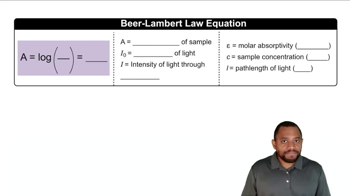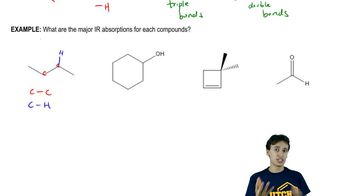How can you use UV spectroscopy to distinguish between the compounds in each of the following pairs?
c.
 Verified step by step guidance
Verified step by step guidance Verified video answer for a similar problem:
Verified video answer for a similar problem:



 5:29m
5:29mMaster Definition of Conjugation with a bite sized video explanation from Johnny
Start learning